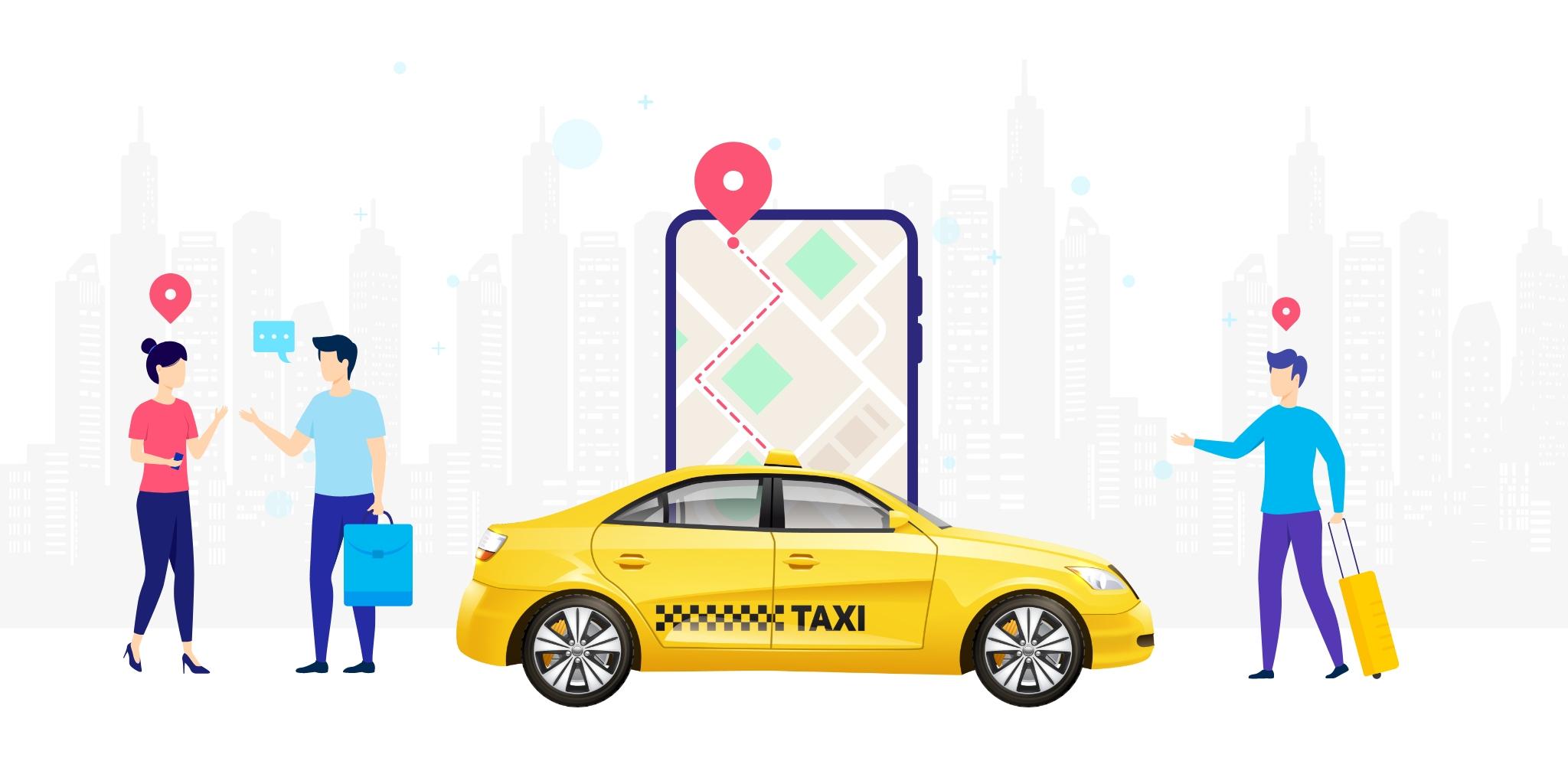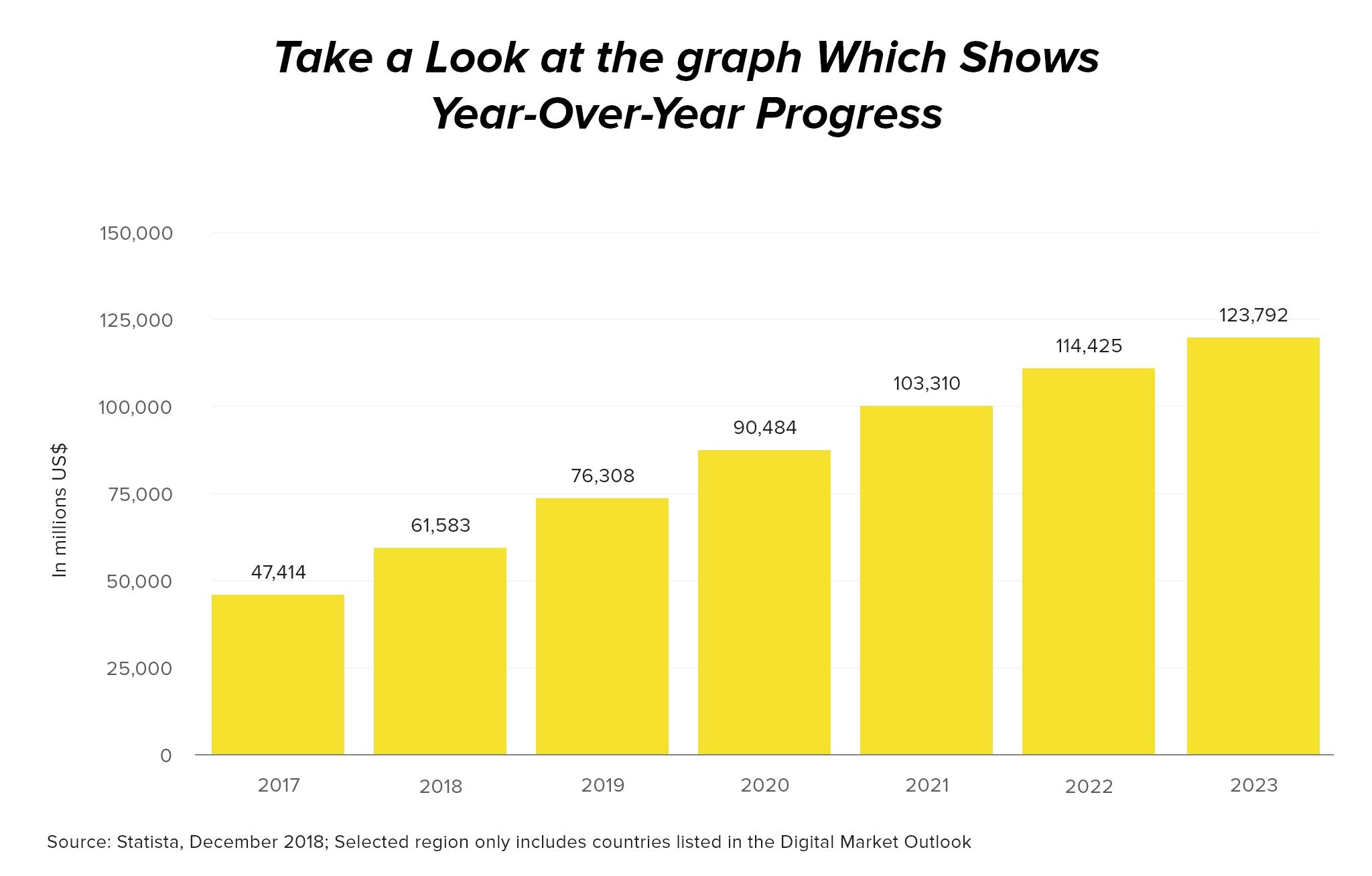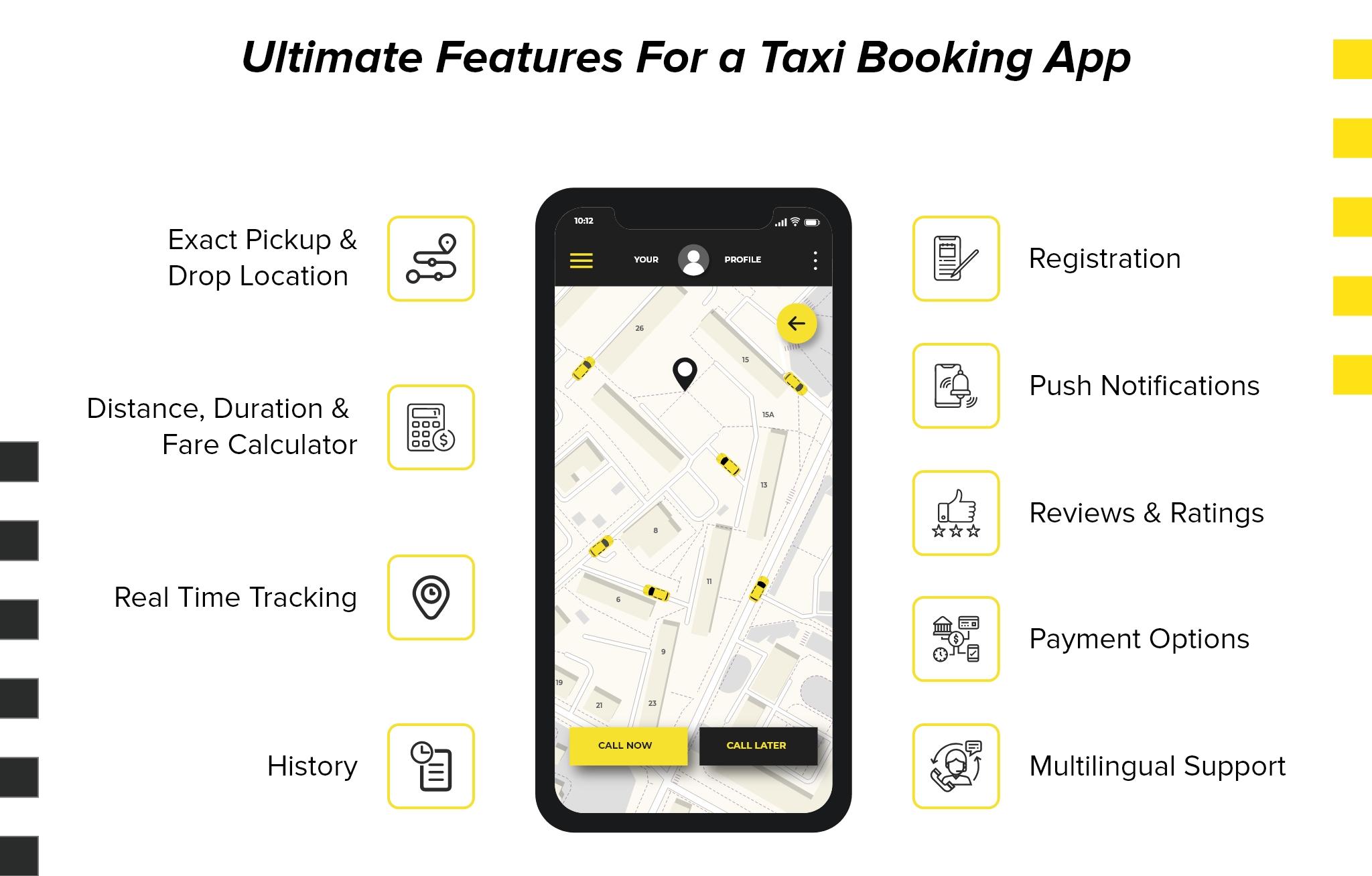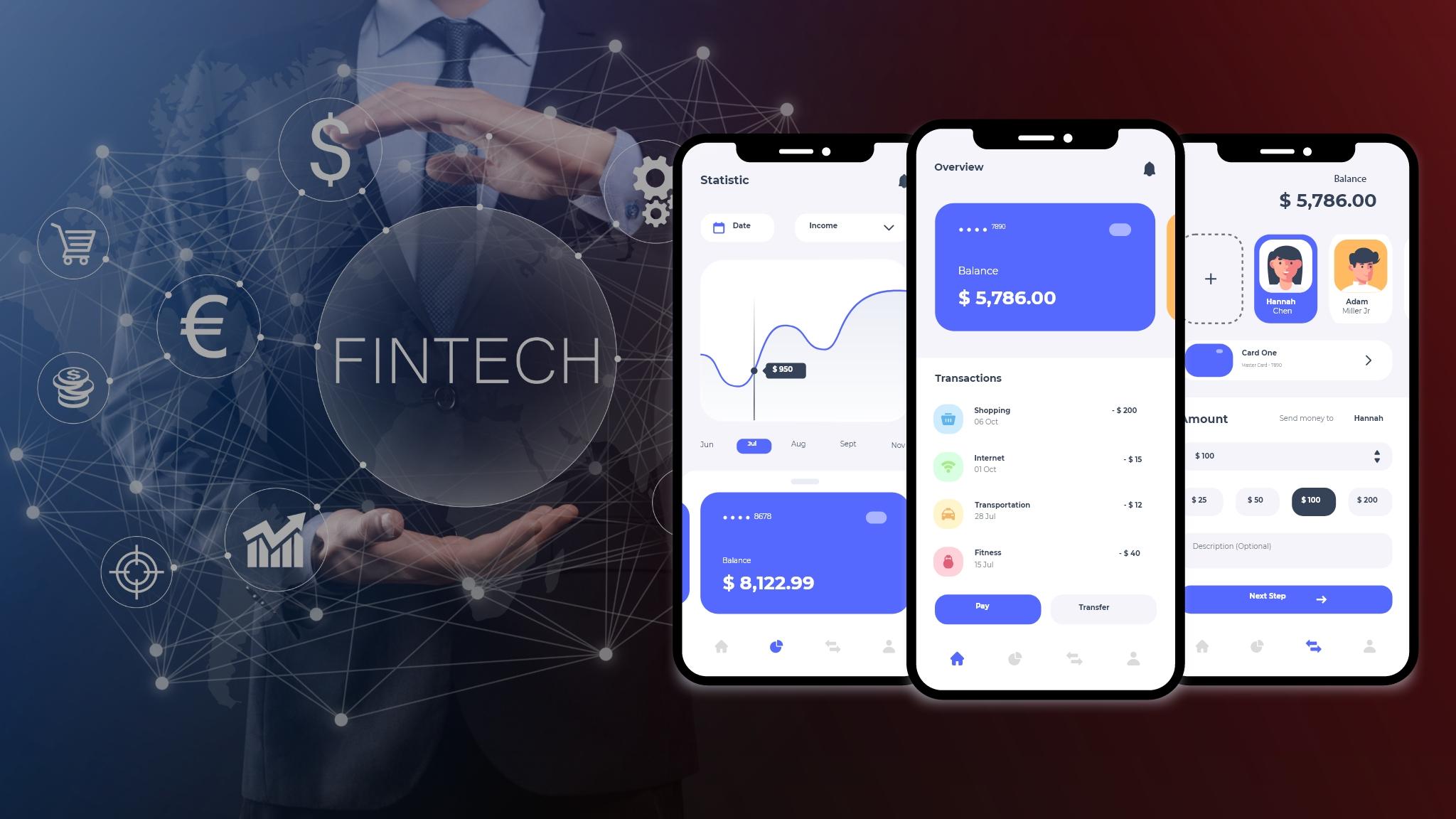Share
Ultimate Guide On Taxi Booking App With Cost Estimation & Features.

As technology has evolved and people’s access to the internet has increased, the use of smartphones for various daily operational tasks has increased. Similarly, due to the growing availability of taxi booking apps in app stores, transportation has been far easier than ever before.
In recent years, Traditional taxi services have taken a back seat and new means of scheduling transport for oneself have emerged. On-demand taxi booking apps abound in the app stores, each boasting features that entice users to book only via them. The rise of these apps has been fueled by the hard work and dedication of mobile app development firms. When it comes to scheduling a ride for oneself, they can be completely trusted.
So, how do these apps perform? It’s easy to understand. Customers must download one of these applications to their mobile devices. A range of factors can affect app selection, including the app’s availability in various locations, the app’s and services’ reviews and ratings, and the services they provide.
After downloading the app, users may register and store their home and business locations, making it simple to order a cab with a single click. They may also use the app to select the car they want to use for their commute. Users may compare car fares once the application calculates the trip’s distance and time. Finally, one may book a taxi and get an estimate of how long it will take.
Technology Stack For Taxi Booking App Development
If you’re considering developing a taxi booking app, you should be aware of the options. Every market has both good and negative information. In many ways, the COVID-19 epidemic had an impact on taxi booking applications, but it was unable to eradicate it completely.

We’ll start this blog off with some numbers that show how the taxi booking app industry has changed over time. The rise in income and user base of taxi booking applications are the subject of these data. Let us have a look;
- According to Statista, From 2020 to 2021, the ride-sharing business is expected to expand by 50%, reaching a global market value of $117 billion.
- The most popular taxi booking apps are Uber and Lyft. Lyft was downloaded 25 million times by people all around the world in 2020, compared to 95 million for Uber.
- According to MarketsAndMarkets), The worldwide ride-sharing industry is anticipated to expand at a CAGR of 19.87 percent from $61.3 billion in 2018 to $218 billion in 2025.
- There were 91 million monthly active platform users in December 2018.
The taxi booking app industry is diverse, and key differences in insights may emerge when geographical shifts occur. The number of people who use these applications is the most important growth element in the industry. The increase is seen if the number is growing.
Must-Have Features for a Taxi Booking App
We just discussed why launching a taxi booking app might be the key to growing your company. Once you’ve decided or discovered why you want to proceed with taxi app development, it’s time to figure out how you’re going to do it. The success of every mobile application is defined by its features.
The process of developing a taxi booking app accounts for 20% of the total cost, while the features account for 80%. Most of the features of every taxi booking app are likely to be the same as those of any other app on the market. So, despite the similarities between you and your competitors, the key is to make yourself stand apart.
However, it’s not only about introducing new features; it’s also about properly implementing existing ones. Let’s look at the features you should think about if you’re ready to start developing your own taxi booking app.

1.Registration
The first step in utilizing the app is to enable this functionality. The rider and driver should be able to simply sign in and register on the app. This may be accomplished by manually filling out the information or by joining up for a social networking platform that includes an OTP.
The quick and simplest approach to get your users and driver registered on your app is to use social network integration. You may, however, maintain manual registration as a choice there as well.
2.Exact Pickup & Drop Location
Your application can use the device GPS to fetch your current location. It may make it possible for the app to offer drivers precise location information. Your location is not manually entered. However, because maps might have inaccuracies at times, human data entry in the pickup location column should always be accessible.
Users may also use the map to pin their pickup location. The users may either pin or manually add a drop place. Voice assistants are used to allowing inputting data into the program via voice inputs, which reduces the task of textual data entry.
3.Duration, Distance & Fare Calculator
The app calculates the distance, journey length, and cost when you enter your location. All of this information is displayed on the customer’s device’s screen. If the fare is acceptable, the customer can confirm the journey by pressing the confirmation button.
The system looks for drivers nearby. A popup appears on the driver’s screen, prompting them to answer if they are available for a ride. When the trip begins, consumers are given an OTP for confirmation after getting confirmation from the driver.
4.Push Notifications
Push notifications are an important feature that makes information more accessible. Push notifications are used by the app system to keep users up to speed on the newest bargains and offers, travel details, and other relevant information elements. With push notifications, both clients and drivers may benefit from single-click confirmation on the taxi booking app. Such a feature makes a taxi application’s interface more simplistic, easy to use, and fast.
5.Real-Time Tracking
A large part of the process that a taxi application follows is physical in real-time, there is a significant need for efficient tracking features that provide customers with information about how long they will have to wait for their taxi and how long it will take them to get to their destination.
6.Multilingual Support
By creating a multilingual app, you may reach a wider audience who may prefer to use a taxi booking app in their local language. It also demonstrates how adaptable your app is. Such a feature may be quite useful in establishing a strong bond between native language speakers and your app, which can lead to more revenue in the long term.
7.Payment Options
The taxi booking app will initially only take cash payments. With the passage of time, the usage of UPI payments and digital wallets became more widespread. Simple payment APIs have been added by developers to allow for easy and quick payment via various modalities. Payment integration must be flexible and feature-rich in order to avoid negatively impacting the application’s overall user experience.
8.History
Developers may use data trackers to give users a centralized location where they can access all of this information in an understandable way to keep track of all recent journeys that were completed or unsuccessful. From their interface, even drivers can see all of their trips and collections. This method enables the application’s data to be collected and viewed in a controlled and systematic manner.
9.Reviews & Ratings
A taxi app development company can offer opportunities for app users to contribute ratings and reviews after a ride is completed to assess both customer and driver experiences. The operating company can use these reviews and ratings to assess the application’s overall performance. It may be an important platform for users or even drivers to express their opinions.
Cost Estimation
At AppDukaan, we strive to keep our clients informed about the dating app development process and next stages. UI/UX Design, Frontend development, Backend development, Project Management, QA testing, Features, and functions added, Technology stack, and Platforms integrated are all variables that influence the cost of taxi booking app development.
Taking all of these considerations into account, the cost of developing a taxi booking app is estimated to be between $80,000 and $100,000.
Conclusion
Transportation services that are simple and quick are becoming more popular across the world. Because it is a simple method to commute while still keeping to social distance standards, demand for online taxi services would increase massively.
The adoption of blockchain technology in taxi app development will almost definitely enhance driver screening and bring other benefits. Another advancement is driverless cars, which eliminate the need for a driver, reduce operating costs, and eliminate parking space difficulties.
To summarise, developing a taxi app requires a considerable financial and time commitment. It’s important to find an experienced and trustworthy taxi app developer. Your initial choice should be the best mobile app development team that is both supportive and technologically forward-thinking.
Rate this article!

I like to learn about technological advancements and perform Case Studies on the Subjects. I am very keen on Learning New technologies. Always excited to expand my horizons, I Keep my Interest in studying marketing and writing content as well.










